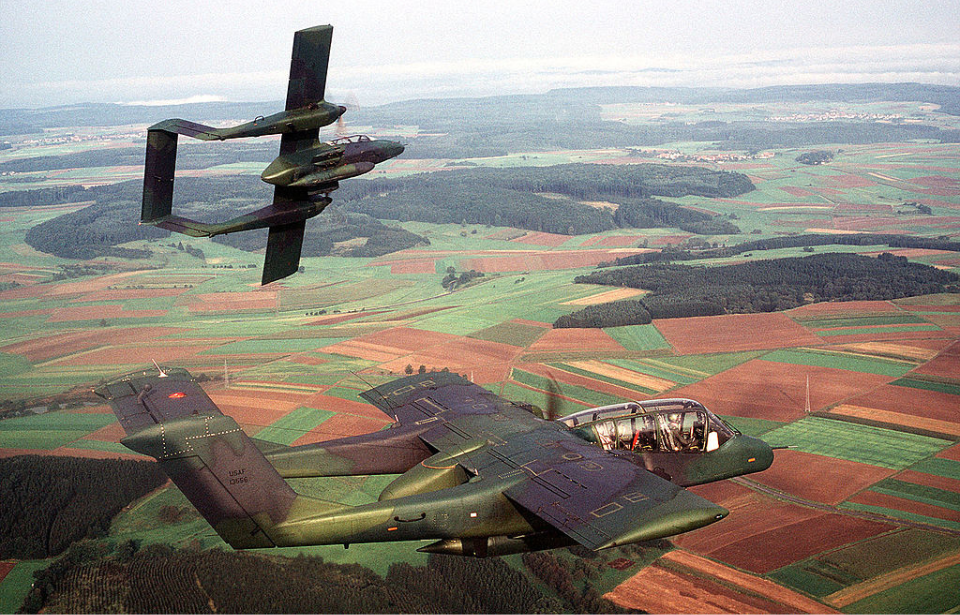The North American Rockwell OV-10 Bronco, a light-attack and observation aircraft from the Vietnam War period, was held in high esteem by the US Air Force, Navy, and Marine Corps. While it was adaptable, it didn’t have enough power to become a critical asset. Nonetheless, its deployment to the Middle East in 2015 suggests that this unique aircraft could potentially stage a comeback in active service.
Development of the OV-10 Bronco
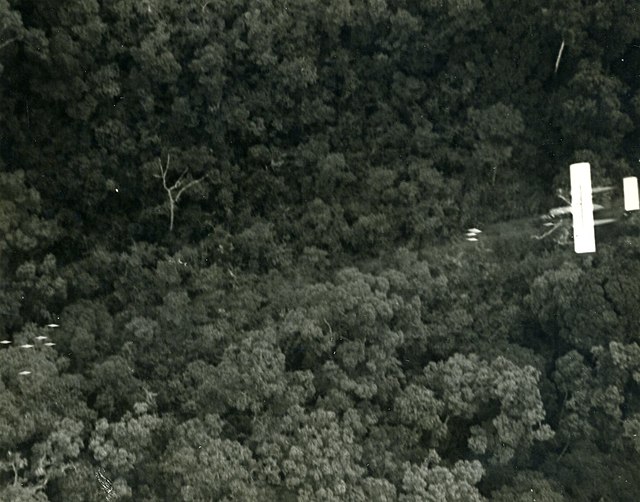
The OV-10 Bronco was introduced into service with the US military via the “tri-service” program, which required an aircraft that could conduct “jungle fighting,” carry an array of weapons and up to 2,400 pounds of cargo, house a two-man crew, operate from an aircraft carrier, feature a twin-engine and takeoff with very little runway space.
Eleven proposals were submitted, including the North American Aviation/Rockwell NA-300, designed by H.K. Beckett and US Marine Corps Col. K.P. Rice. The pair came up with a design and approached North American Aviation with it. After the concept was selected, seven prototypes were ordered, with the light-attack aircraft, by then called the “OV-10 Bronco,” taking to the skies in August 1967.
Once it was proven effective, the OV-10 was put into large-scale production, with 360 rolling off the manufacturing line between 1965-86.
OV-10 Bronco specs
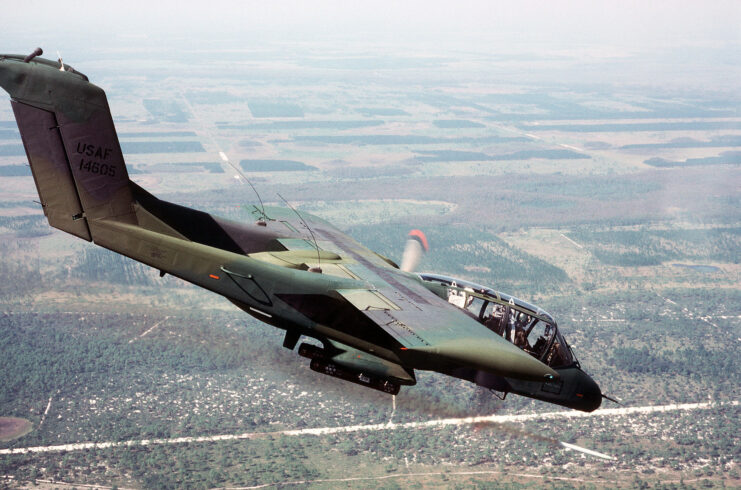
The OV-10 Bronco had twin booms, connected by a horizontal stabilizer and containing twin Garrett T76-G-420/421 turboprop engines that could, in times of need, be filled by high-octane automobile fuel. These powered three-bladed feathering propellers and allowed the aircraft to travel at a maximum speed of 281 MPH and have a maximum range of 1,240 miles.
In terms of the body, the OV-10 featured cut-off wing tips and a cockpit that afforded the pilot excellent visibility during combat. The underneath portion of the fuselage included “stub wings” – officially known as sponsons – that could be used for storage, while the inside of the cockpit featured ejection seats that ensured aviators could bail out, should the need arise.
As aforementioned, one of the main requirements of the OV-10 was that it could take off within short distances. It was given this capability, as well as the ability to take off from aircraft carriers without the use of catapults or arresting wires.
In terms of armament, the OV-10 was equipped to the brim with guns, rockets and missiles. The “D” variant could feature either four 7.62 mm M60C machine guns or a single 20 mm M197 cannon. Through its seven hard points, it could also carry the AIM-9 Sidewinder, bombs, flares, rockets with white phosphorus, high-explosive rockets and seismic sensors.
Service with the US Air Force
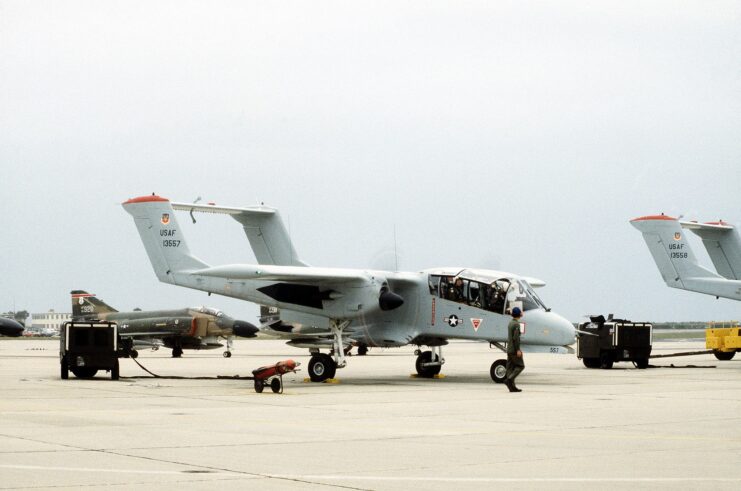
The first US Air Force-operated OV-10 Broncos were deployed to Vietnam in July 1968 as part of Operation Combat Bronco, the branch’s chance to test and evaluate the aircraft’s capabilities in combat. Along with conducting various missions, it was also put into service as a forward air control (FAC) aircraft and as an escort during Operation Ranch Hand.
Between April and June 1969, the OV-10 underwent additional testing under an operational exercise known as “Misty Bronco” in the tactical zone under South Vietnam’s III Corps. The aim was to prove the aircraft could act in light-attack roles, which led units to be equipped with M60C machine guns. This was followed by additional modifications two years later, aiding in the interception of enemy troops and supplies along the Ho Chi Minh Trail.
Following the Vietnam War, the OV-10 remained active with the Air Force, but saw limited deployments. In September 1991, the aircraft was retired from service with the US military branch.
Service with the US Marine Corps
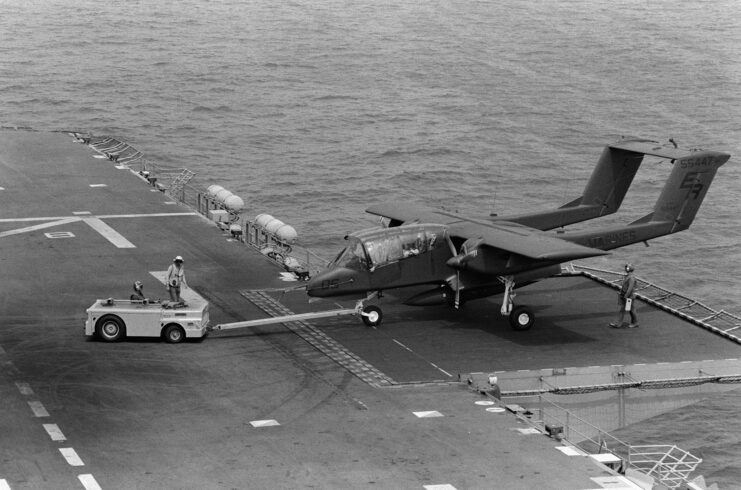
Out of the three US military branches under which the OV-10 Bronco saw service, it was the US Marine Corps that put it to work. Upon entering service, the aircraft was employed by two observation squadrons, which each flew nine of the “A” variant and nine of the “D” model. On top of this, the Marines established an Air Reserve Observation Squadron with the aircraft.
The Marine Corps received 114 units of the OV-10A, which initially favored the aircraft for its ability to take off from virtually any platform, whether that be an aircraft carrier or a primitive dirt road. Over the course of the Vietnam War, the branch operated it during a host of missions and in several roles, with it surpassing everyone’s expectations.
Outside of Vietnam, the OV-10 saw service with the Marine Corps during Operation Desert Storm. This was a decision the US Air Force and the US Navy refused to copy, as there were fears the aircraft wasn’t powerful enough to withstand the advancements of modern combat. Some units were lost, leading the Marines to officially phase out the OV-10 in 1995.
Service with the US Navy
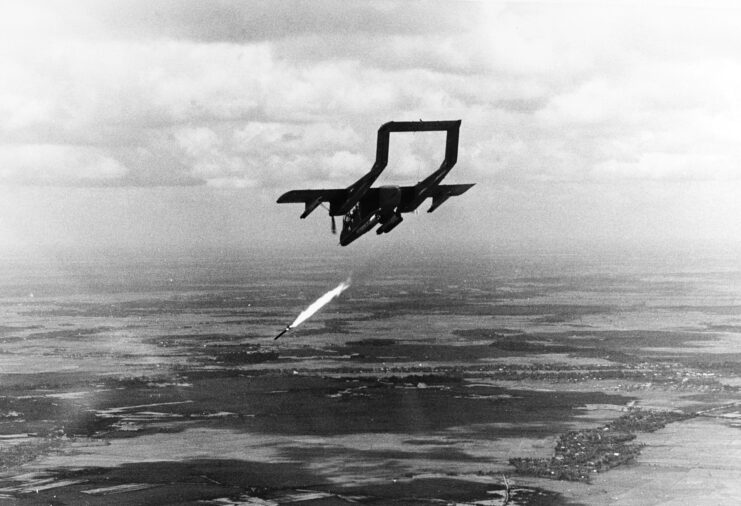
The US Navy also operated the OV-10 Bronco, though not as extensively as the US Air Force and Marine Corps. On January 3, 1969, Light Attack Squadron Four (VAL-4) was formed by the Navy and assigned tasks such as aerial reconnaissance, offensive operations, fire support, and enemy interdiction in support of Navy SEALs, Marines, and naval river patrol craft.
VAL-4 began combat operations in April 1969, with squadron pilots conducting surveillance and combat missions over the Mekong Delta, notably during the Cambodian Campaign. The squadron’s most significant contributions occurred during this time and the later stages of the Vietnam War, culminating in its final combat mission in March 1972.
The OV-10 Bronco has seen service with other countries
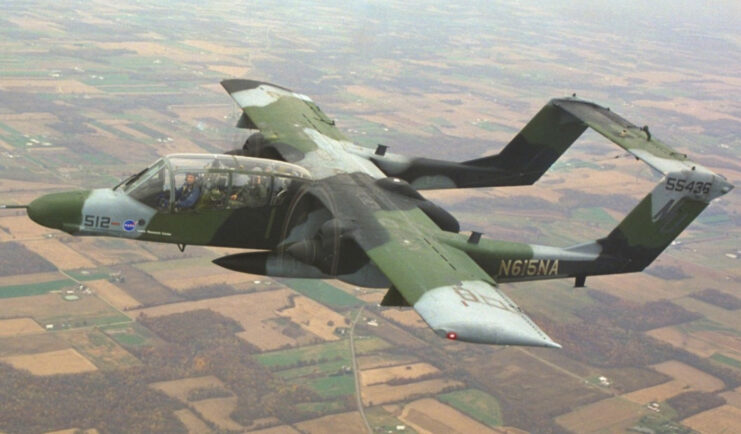
While in service with the US military during the Vietnam War, the OV-10 Bronco showed the aforementioned issues with being underpowered, which put it at risk in certain combat scenarios, particularly those in sloping terrain. Despite this, several nations adopted it for use by their air forces. West Germany, Colombia, Venezuela, the Philippines, Morocco, Indonesia and Thailand all operated it at one point.
Outside of military purposes, the OV-10 has been operated by the likes of NASA and the US government, with the former using it for research purposes and the latter – in particular, the Department of State – operating the aircraft via DynCorp International for drug interception purposes in South America.
Both the Bureau of Land Management (BLM) and the California Department of Forestry and Fire Protection have also adopted a number for fire prevention and control.
More from us: Bell P-63 Kingcobra: The American Fighter-Turned-Soviet Tank Buster
While widely believed to have been completely retired from military use in the United States, it was reported in 2015 that two OV-10s flew 120 combat missions in the Middle East, presumably in Iraq and Syria, over 82 days.
